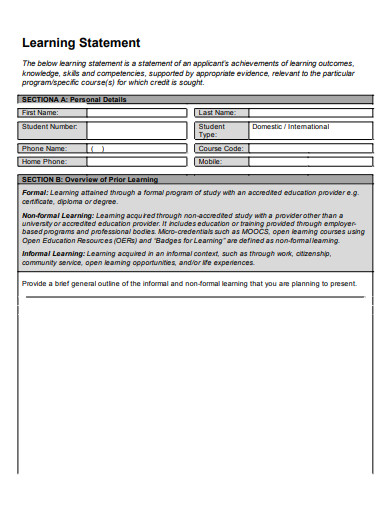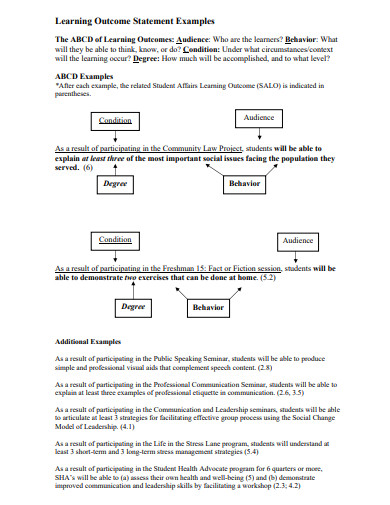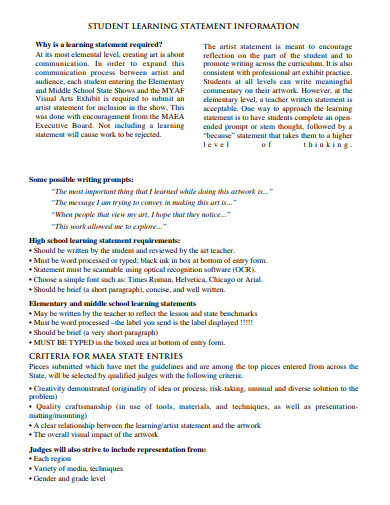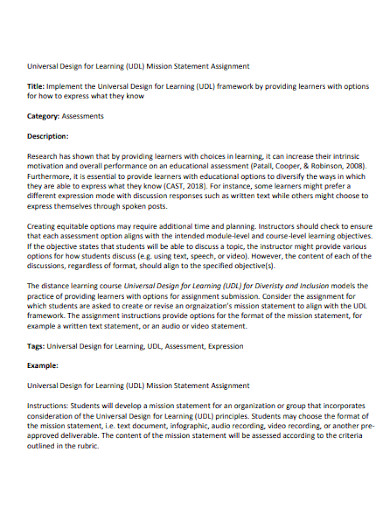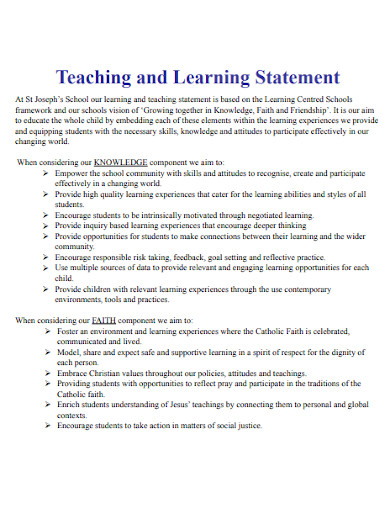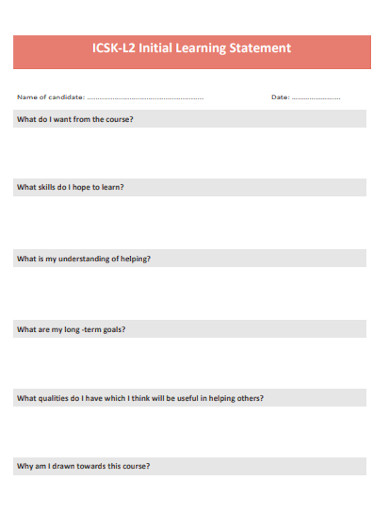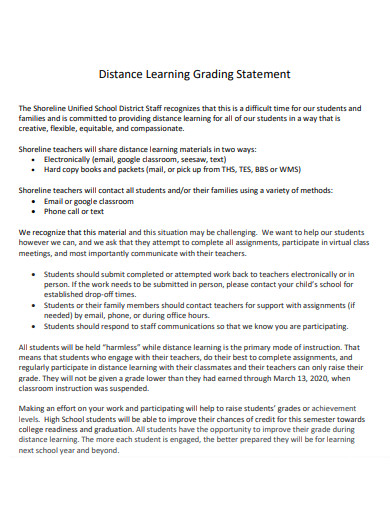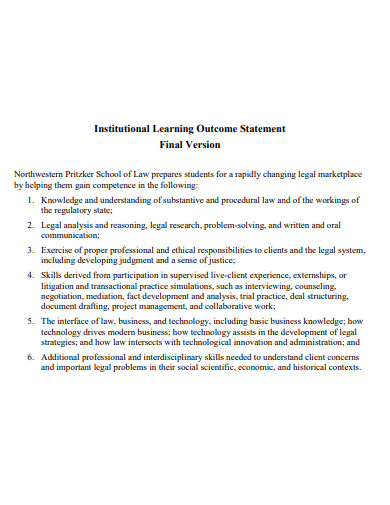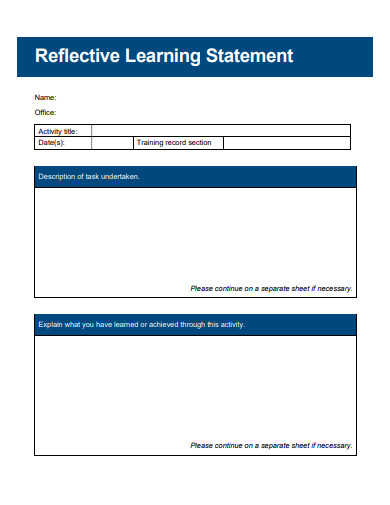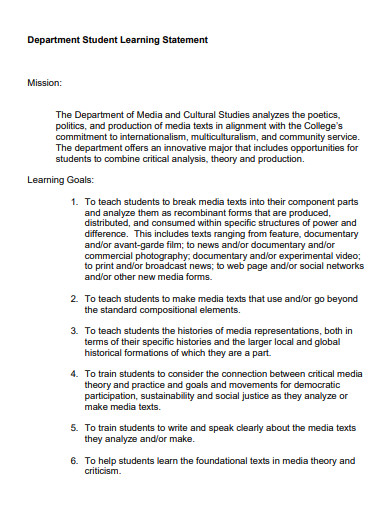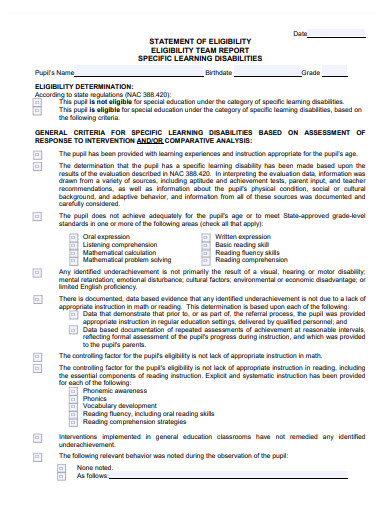10+ Learning Statement Examples to Download
Students who participated in activities in their school know for a fact that they are tasked to write something. After every activity, they are expected to write a reflection statement or a personal statement. This is to make them comprehend what they have discovered, whether on a personal level or an academic level. These kinds of statements are called learning statements. In this article, you will get to know what a learning statement is, reflective and personal. How you make them and why they are important for a student to know about. With that, here are examples of learning statement templates. Be sure to download.
10+ Learning Statement Examples
1. Learning Statement Template
2. Learning Outcome Statement Example
3. Student Learning Statement
4. Learning Mission Statement
5. Teaching and Learning Statement
6. Initial Learning Statement
7. Distance Learning Grading Statement
8. Institutional Learning Outcome Statement
9. Reflective Learning Statement
10. Department Student Learning Statement
11. Learning Statement in PDF
What Is a Learning Statement?
Learning statements are statements that you make in order to write down what you feel. Often called a personal statement or a reflection statement, a learning statement is documented as a means of letting students express themselves in whatever way they are able to and are comfortable in doing. In addition, a learning statement gives their readers an opportunity to understand the views of the students as they make their own reflective essays of what they have learned so far in the activities they have joined in. Just like writing in a journal, a learning statement lets students express their personal or reflective thoughts. Unlike a journal, the learning statement must only be around two to three sentences long.
How to Write a Learning Statement
In order to express what you have learned or what you have experienced, writing a learning statement is the tool for you. Though it may look tricky, knowing for the fact that a learning statement can sometimes be mixed with listing down your skills in a skills statement, it is quite different altogether. To get a good glimpse into a learning statement, here are steps you need to take to write your learning statement.
Step 1: Make a Draft of Your Learning Statement
To get a good idea of what you should include in a learning statement, brainstorm and make a draft first. This is a good step towards making your learning statement, as it gives you the opportunity to write what you think should be included as opposed to what should be in it. It also gives you the opportunity to make mistakes as this is simply a draft and not the final output.
Step 2: Make It Personal and Reflective
Avoid making it too bland that the whole point of your learning statement is lost. Make it personal and reflective. Let the reader know what you have learned and what you can say about it. This helps in keeping it interesting and worth the read. It also gives them the chance to get to know you through the statement you wrote.
Step 3: Keep Everything Short, Clear and Concise
Your learning statement should not be too long as it defeats the entire purpose of writing it. The maximum length is three sentences. The three sentences must have the facts, the purpose and of course what you have learned. You must also remember to keep your sentences clear and concise.
Step 4: Finalize Your Draft Learning Statement
Lastly, finalize the draft you have made during the first part. See to it that your statement only has three sentences at a maximum. When you are sure of your learning statement, do a short and quick review. Simply make an overall review to see if the words you used can be understood by everyone.
FAQs
What is a learning statement?
A learning statement is a short but descriptive summary of what you have learned. How you reflect it whether personal or not.
How lengthy is a learning statement?
The length of a learning statement is only three sentences long. Regardless of it being in paragraph form, it only takes three sentences to make a learning statement.
What should be stated in a learning statement?
Your learning statement can be made as personal, reflective or academic. The information in your learning statement will depend on how you write and how you perceive what you learned.
When you write your learning statement, make sure you do not sound too bland or too wordy. The whole point of a learning statement is to talk about what you learned or how you perceive the activity you attended.



